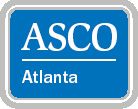Article
Chemo appears superior to RPLND in stage I testis cancer
Author(s):
Atlanta-Will patients with stage I nonseminomatous testicular cancer (NSGCT) do better with one course of chemotherapy than with retroperitoneal lymph node dissection (RPLND)? That's what the results of a large, long-term German study implied, but some have sounded a note of caution, wanting longer and better follow-up before recommending any first-line therapy other than rigorous surveillance. The answer may depend on the care that will work best in the community, rather than on the care available at specialized centers.

At the American Society of Clinical Oncology annual meeting, Peter Albers, MD, PhD, department of urology, Klin-ikum Kassel, Kassel, Germany, presented results of a marathon trial from the German Testicular Cancer Study Group that was conducted at 60 centers in Germany between September 1996 and February 2005. At the time the trial was designed, only surgery was used for adjuvant therapy, and risk factor-adapted treatment and surveillance were not considered realistic options. In addition, results of a small trial implied that one course of cisplatin, etoposide, and bleomycin (PEB) could cut recurrence rates with minimal toxicity, Dr. Albers explained.

Follow-up included marker measurement and imaging (chest radiography and computed tomography), which were done every 2 months and 4 months, respectively, in the first year; every 3 months and 6 months in the second; and every 6 months for both (but no CT) in the third to fifth years. Toxicity and quality of life also were measured. Patients were followed for more than 1 year; the median was 51 months for chemotherapy patients and 50 for surgical patients.
Rate of recurrence, the primary endpoint, was 1.1% (two patients) in the chemotherapy group and 7.5% (14 patients) in the RPLND group, a statistically significant difference (p=.0028). Recurrences among RPLND patients occurred within 16 months and at various sites. Among PEB patients, one had elevated markers after 16 months and one relapsed at 5 years with a mature teratoma that was resected. Because recurrences were successfully treated, cancer-specific survival was 100%.
Among RPLND patients, major complications, such as pulmonary embolism and renal artery stenosis, occurred in 1%, and minor complications, such as poor wound healing and infections, occurred in 15%. Two patients had complications from added PEB therapy. Among patients receiving PEB, 1 had a pulmonary embolism and 6.2% experienced minor complications of chemotherapy.
Recurrence rates and toxicity or complications were lower for one course of chemotherapy than for surgery, Dr. Albers said. He added that, although the teratoma was not unexpected, longer follow-up is needed to exclude late relapses with chemotherapy. Questions remain about high-risk patients.
"It needs to be proven that one course of PEB really is efficacious in patients with complete high-risk features because this trial was done in a patient population with only 50% of high-risk patients," Dr. Albers said, adding that a clinical trial to answer that question is under way in Germany.
Times have changed since this study was designed, enough so that simply changing practice to a single course of PEB may not be a given on the basis of this trial.
Newsletter
Stay current with the latest urology news and practice-changing insights — sign up now for the essential updates every urologist needs.
















